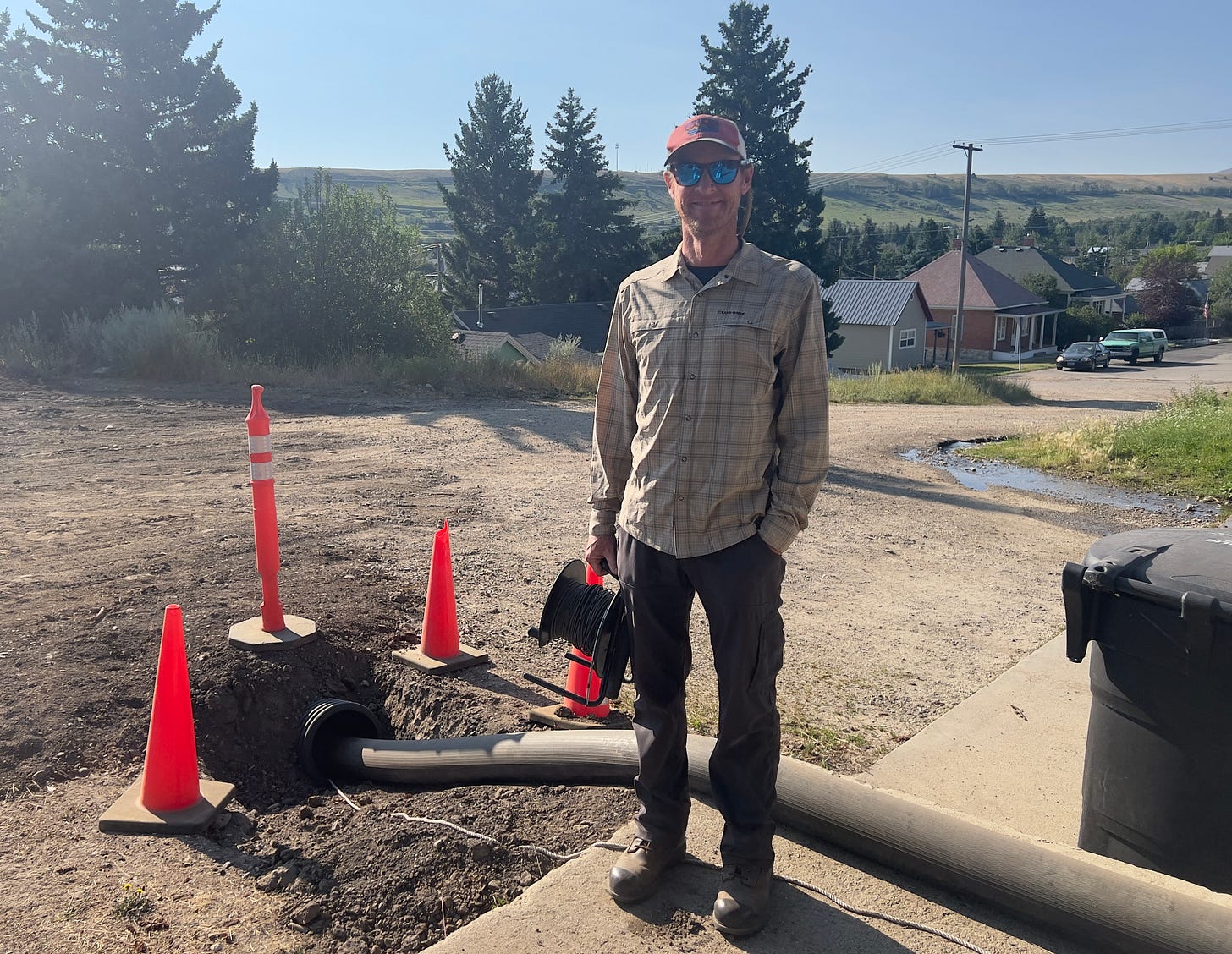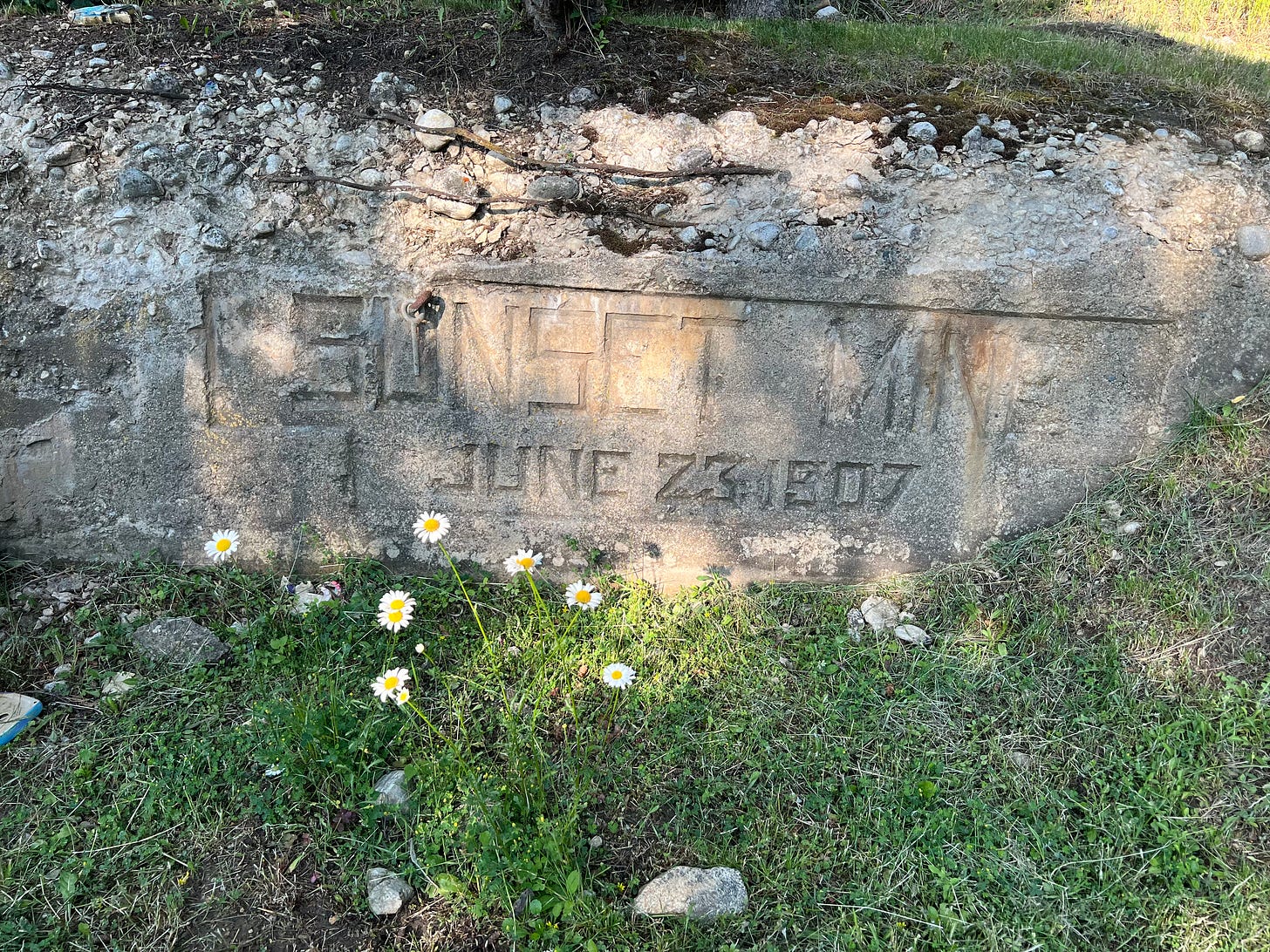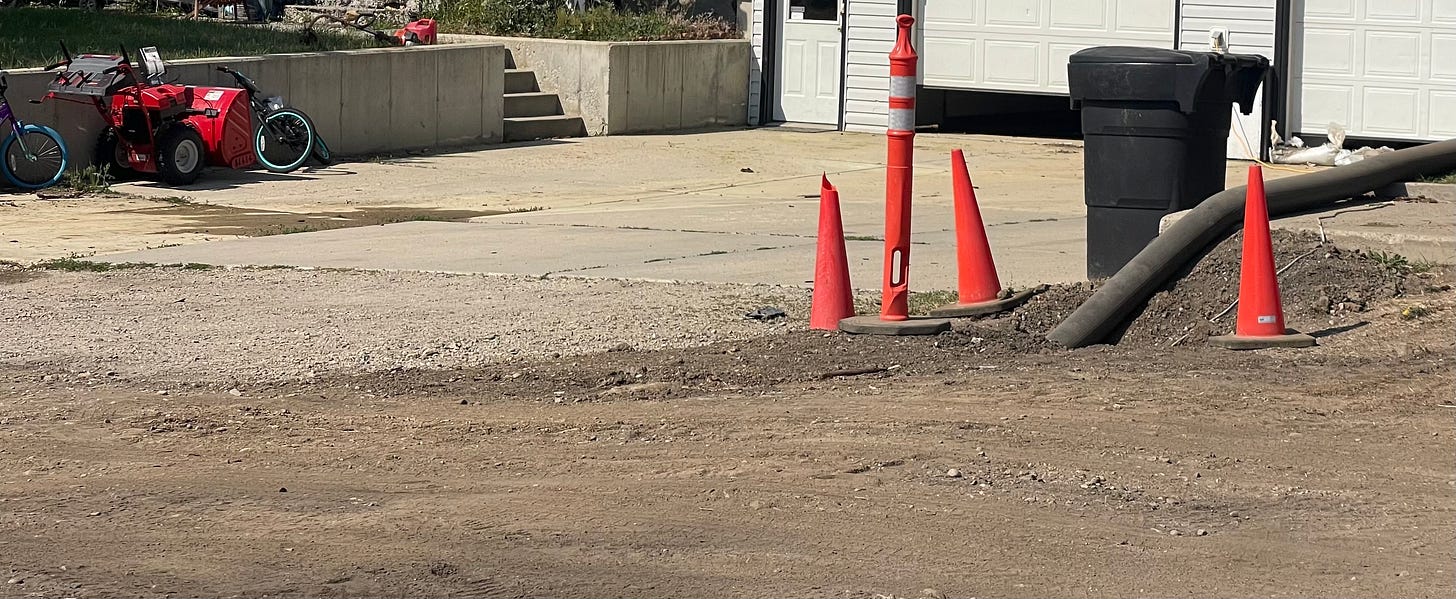Sunset Mine Flooding Repairs See Light at the End of the Tunnel
A void in the mine shaft can provide path for water flow
By Denise Rivette
On Thursday, DEQ reported that its staff and contractor were able to start “dewatering” using a large sump pump to mitigate the flooding of the garage and re-route water to the city of Red Lodge’s infrastructure. According to their statement, “We will continue running a pump and will be installing a float system to keep the water level low enough to prevent further flooding while we work toward a long-term solution, which will likely be the installation of a new gravity-fed drain. Olympus (Technical Services), DEQ’s contracted engineering firm on the project, is working on the design for the drain and will be coordinating with the city to have it connected to the stormwater system, as it was before.”
“The crew has also installed multiple piezometers, a device used to measure underground water pressure, to better understand the hydrology and monitor water levels. This area has ground water and surface water contributions. At this time, the water levels are controlled, but DEQ continues to monitor those levels closely."

John Babcock, Environmental Project Officer for DEQ, was at the site Friday morning before 9:00 a.m. and elaborated on the progress. He is pleased that the sump pump is working well as a temporary solution and diverting the water from the mine into the City’s stormwater system, relieving pressure on the City’s sewer system and the bulkhead. There was still some water seepage into the basement of the affected house (see photo above) but, with adjustments to the sump pump system, that was completely dried up by 11:00 a.m. (see photo below).
The long term solution is to find a path for the water to naturally and safely make its way from the West Bench to the City’s stormwater system. The collapse of the old drain kept the water from exiting the Bench, raising the water level in the area and producing pressure behind the bulkhead. Babcock pointed out that there are surface water issues as well, not affiliated with the mine, that are being taken into consideration as the new water diversion project is designed. While the surface water issues are not caused by the mine, because they could impact the situation in the future, DEQ’s engineering consultant, Olympus Technical Services, has been asked to consider surface water in their design process.
The crew spent a few days working their way south in search of a void in the mine shaft that would allow the water to channel in a way that will naturally allow it to be directed to the City stormwater system, similar to the way the previous gravity drain functioned. After punching a few holes that led to debris filled portions of the shaft, the crew finally found a workable void allowing Olympus Technical Services, to begin designing the details of a permanent solution.
When asked how this project is being funded, Babcock replied, "DEQ's Abandoned Mine Lands Program responds to problems that result from past mining operations prior to passage of the Surface Mining Control and Reclamation Act of 1977 (SMCRA). Projects such as this are funded through fee dollars from current coal mining operations that are set aside to reclaim abandoned mines.” Depending on the scope of the project, additional funding sources are sometimes used, such as grants. In addition to providing the new drain to the stormwater system, DEQ will fix the damage to the private properties caused by the flooding and efforts to repair the issue.
According to DEQ sources, the “Sunset Mine was initially developed around 1901 and later acquired by the Northwestern Improvement Company in 1907. Mining was conducted steadily until a downturn in the late 1920s. The company stopped mining completely in 1932. Historic documents note that water was a constant problem in the west side mines, located immediately adjacent to the present-day property experiencing flooding.”






Have they tested the water to make sure there is no radioactivity or there aren't any heavy metals that would be draining into the stormwater system?